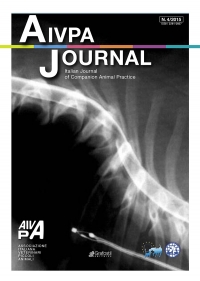Emivertebre: sintomi neurologici e chirurgia
Hemivertebrae: neurological signs and surgical treatment
Authors
Zavattiero S.
DVM, PhD, Libero Professionista, Parma
Summary
Hemivertebrae is a common congenital vertebral disorder in most small brachycephalic “screw tailed” breeds of dog such as French Bulldogs, English Bulldogs, Pugs, and Boston Terriers but other breeds can be affected. Hemivertebrae can be single or multiple and, although the condition mostly occurs in the thoracic spine, they also occur in the lumbar and cervical regions. Most affected dogs do not have associated clinical signs. If present, neurologic signs may be present at birth or, most frequently, occur later as a consequence of progressive intervertebral instability and spinal canal stenosis. The diagnosis is suspected based on clinical signs, age and breed. Diagnosis is based on survey radiographic findings. Advanced imaging techniques (MRI and CT) are required to confirm the compressive role of the hemivertebrae, and to demonstrate its aetiological role in any observed neurological problems. Because neurologic deficits are frequently mild and nonprogressive, conservative treatment is often appropriate. Nevertheless, there are some affected dogs in which the clinical signs progress to cause unacceptable loss of function and for those individuals, a surgical solution is required. Decompressive surgery and vertebral stabilization is recommended with clinical signs of compressive myelopathy and spinal instability. Surgical management can be challenging and there are only a few reports of such cases in the veterinary literature.
Keywords
hemivertebrae, vertebral malformation, brachycephalic breeds, “screw tailed” breeds, dog


